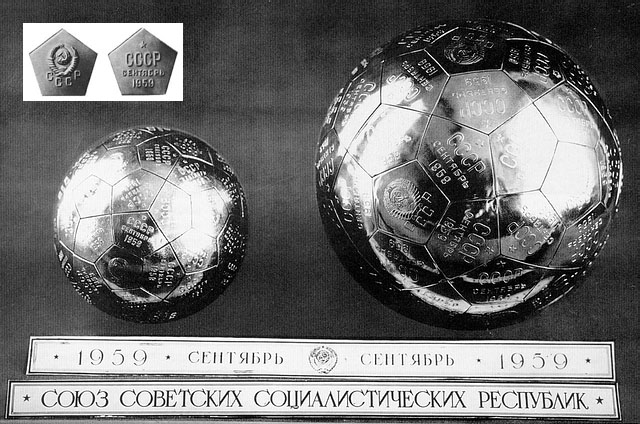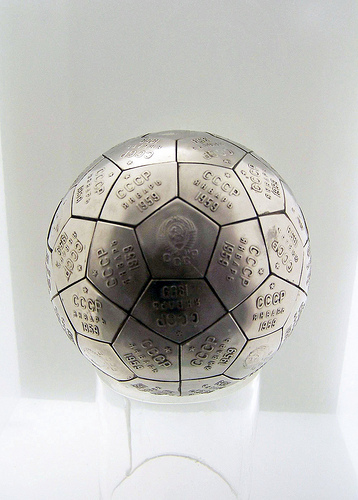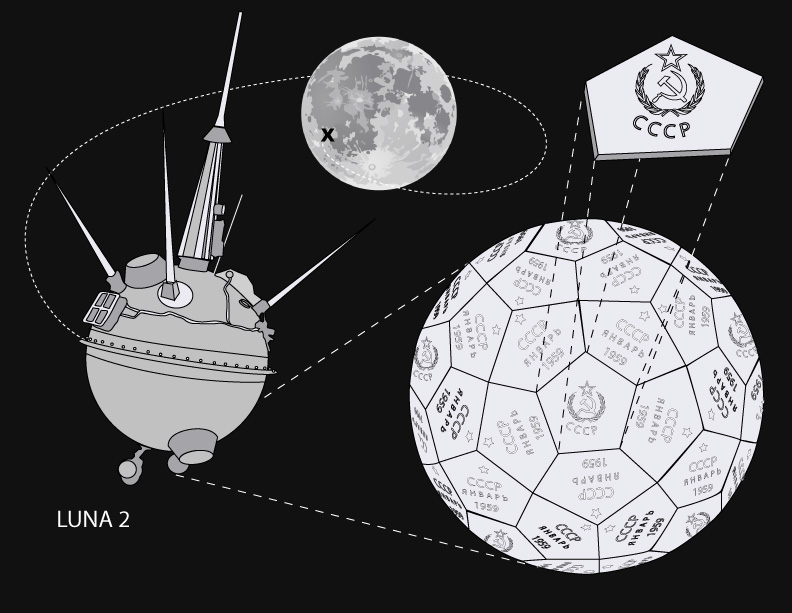"Moscow shot for the Moon, and scored a bullseye".
Although the Americans were the first to set foot on the Moon in 1969, they were not the first to leave their mark on the lunar surface.

In a fascinating act of planetary branding, or a sophisticated piece of land-art to trump any Andy Goldsworthy, the Soviet Luna-2 mission was the first man-made object to reach the surface of the Moon, crash-landing east of Mare Imbrium, on September 14, 1959. The Universal Newsreels report called it a propaganda bonus for Krushchev, stating "Moscow shot for the Moon, and scored a bullseye".
On board the Luna-2 craft were 2 small spheres, composed on a number of pentagonal panels, like a small football. The panels were made from titanium with "thermoresistant polysiloxane enamels." Each pentagon is a pennant, printed with the USSR state seal - a wreath of grain around the hammer and sickle - or the message СССР (USSR), СЕНТЯБРЬ(September) , 1959.

The ball on display at Kansas Cosmodrome, as discussed here, is inscribed with ЯНВАРЬ (January), rather than September, so it is likely that these were also placed on the earlier Luna 1 mission which launched in January 1959. Due to a programming error, Luna 1 missed the Moon by approximately 6000km, and instead became the first man-made object to reach heliocentric object. Its orbit now lies somewhere between Earth and Mars. With typical Soviet opportunism, it was dubbed Mechta (Dream) and also referred to as the First Cosmic Rocket.
It is unclear whether the balls were fitted with an explosive charge, to be fired from the craft before impact, and scattering individual pentagonal pennants, or whether the sphere was designed to stay intact, bouncing and rolling across the lunar dust. Either way it is unclear whether they would have survived the heat generated by the impact of Luna 2, estimated at 11000°K.
This picture implies there were two different sizes of sphere. The Wikipedia article states that there was a third ball, which was located in the main part of the rocket, which crashed into the Moon 30 minutes after the Luna-2 probe.

As this excellent page on Soviet spacecraft pennants shows, it seems that all Soviet space craft carried metallic pennants, left to commemorate the missions. This included the various Mars probes and the Venera (Venus) missions. Later Luna missions included rectangular pennants that illustrated from whence the craft came.
